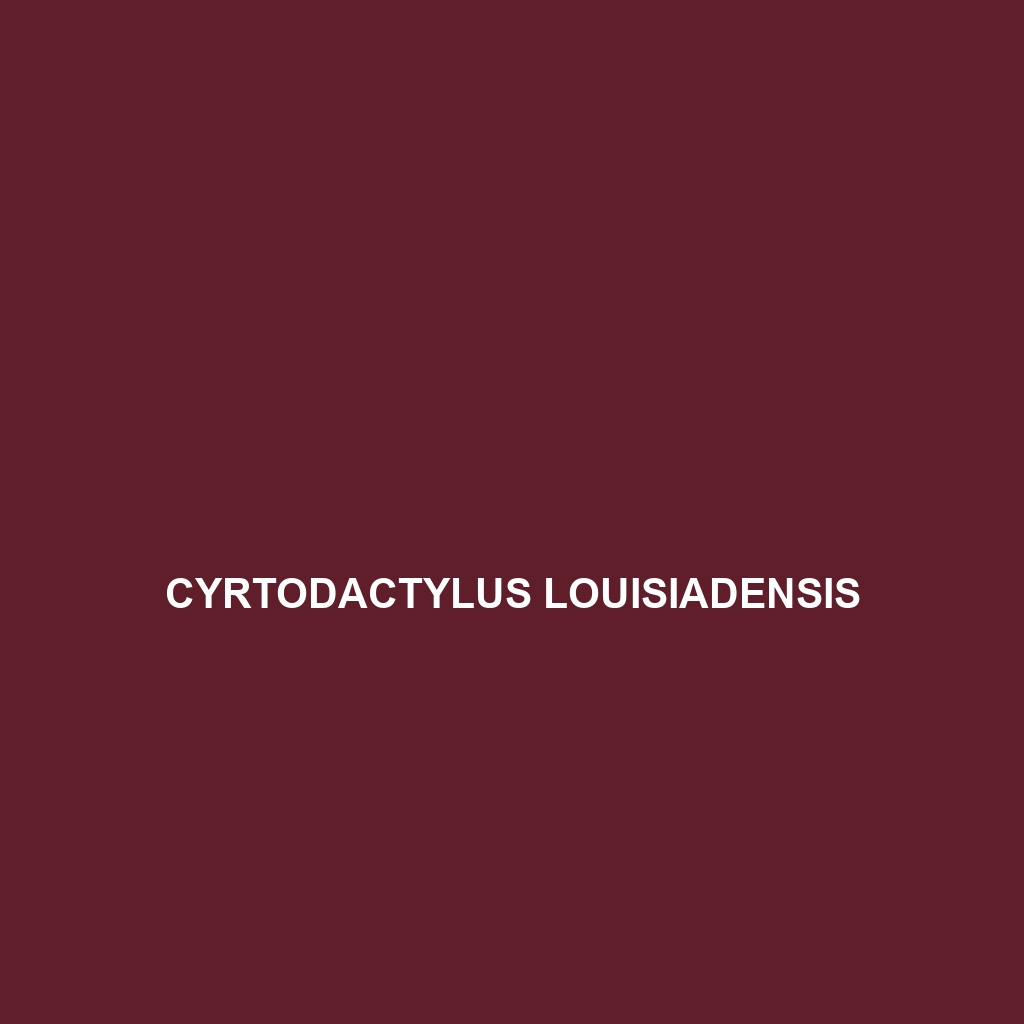Cyrtodactylus louisiadensis
Common Name: Cyrtodactylus louisiadensis
Scientific Name: Cyrtodactylus louisiadensis
Habitat
Cyrtodactylus louisiadensis, commonly known as the Louisiade bent-toed gecko, is primarily found in the Louisiade Archipelago of Papua New Guinea. These geckos inhabit tropical forests and can often be found in humid lowland areas, displaying a preference for rocky outcrops and tree hollows. Their natural habitat consists of a rich ecosystem that provides ample cover and nesting sites, essential for their survival.
Physical Characteristics
This species typically measures between 10 to 20 cm in length, characterized by its elongated body and distinctive bent toes, which allow for better grip on surfaces. Cyrtodactylus louisiadensis features a primarily brown or tan coloration with darker bands that aid in camouflage among the foliage of its environment. Its smooth scales and robust limbs make it an agile climber, perfect for navigating its arboreal habitat.
Behavior
Cyrtodactylus louisiadensis is primarily nocturnal, exhibiting crepuscular activity during dusk and dawn. These geckos are known for their territorial behavior, with males often engaging in combat displays to assert dominance over their area. Notably, these geckos rely on a combination of motion and color changes for communication, making them a fascinating study for researchers interested in reptilian behavior.
Diet
The diet of Cyrtodactylus louisiadensis mainly consists of insects and other small invertebrates. They are proficient hunters, utilizing their keen eyesight and quick reflexes to catch prey such as crickets, beetles, and moths. Their feeding habits play a crucial role in controlling insect populations within their ecosystem.
Reproduction
Cyrtodactylus louisiadensis engages in seasonal breeding, typically during the warm, wet months when food sources are abundant. Females lay clutches of 1 to 2 eggs, which they often bury in soft substrate for protection. After an incubation period of 50 to 70 days, hatchlings emerge, fully capable of independent survival.
Conservation Status
As of the latest assessments, Cyrtodactylus louisiadensis is classified as vulnerable due to habitat destruction and the impact of invasive species. Conservation efforts are essential to preserve their remaining habitats and ensure their survival for future generations.
Interesting Facts
Cyrtodactylus louisiadensis is often noted for its unique ability to change color slightly in response to temperature and environmental conditions. Additionally, these geckos exhibit a fascinating form of social interaction, where they can often be seen basking together in warm locations during cooler evenings, showcasing their social adaptability.
Role in Ecosystem
In its ecosystem, Cyrtodactylus louisiadensis serves as both predator and prey. As an insectivore, it helps maintain the balance of insect populations, contributing to ecosystem health. Furthermore, it is a food source for larger predators within its habitat, embodying the intricate food web that sustains biodiversity in the Louisiade Archipelago.
